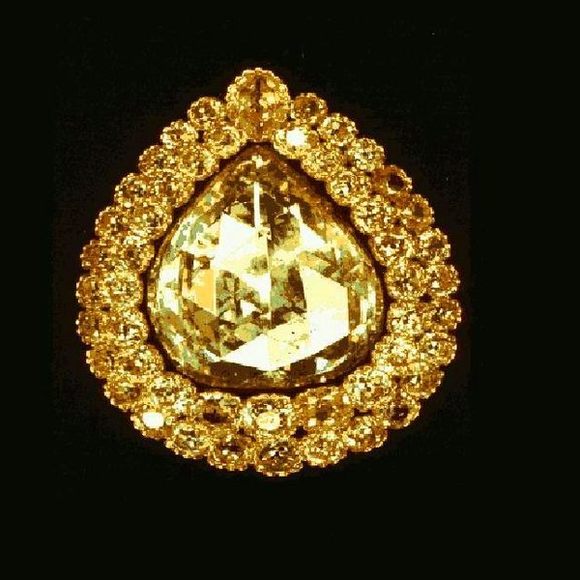The Spoonmaker's Diamond
No one is sure if the world's fourth-largest diamond had been found in a rubbish heap or was pawned by Napoleon's mom.
Weighing in at 86 carats on its own, set in silver and surrounded by a dazzling array of 49 old-mine cut diamonds, the Spoonmaker’s Diamond is the literal crown jewel of Topkapi Palace Treasury. Despite receiving centuries of praise for its crystal clear color, its radiance has a mysterious quality not unlike that of a bright, full moon. As is the case with the most powerful celestial beings, perhaps it is this same unknowable, mythologized essence that also unwittingly draws viewers to gaze upon the Spoonmaker’s Diamond – for no one knows exactly how the world’s fourth-largest diamond came to reside in the heart of Istanbul’s old city, who is responsible, or from whence it arrived.
The most popularly accepted version was hand-written by Rasid, the Ottoman court’s official historian, and goes something like:
In the year 1669, a fisherman idly combing a rubbish heap near Eğrikapı along Istanbul’s shoreline came across a large, unusually shiny stone. Thinking it beautiful but having no idea what the piece was, he put the gem in his pocket, where it lived for a few days until he stopped by the jewelers market. Showing it to the first man he came across, the professional recognized its value but bamboozled the fisherman. According to Rasid, the Ottoman court’s official historian, the jeweler said to the man, “It’s a piece of glass, take it away if you like, or if you like I’ll give you three spoons. You brought it all the way here, at least let it be worth your trouble.” Accepting his offer as a fair payment for his time, the fisherman departed with his three spoons, and the jeweler gained the fourth-largest diamond in the world.
A second, newer story has begun to emerge recently among historians, in which a French officer named Pigot purchased the diamond from India’s Maharajah of Madras in 1774. Several involved parties later, the jewel was put up for auction in Paris, where none other than Napoleon’s mother won the gem. When her son was exiled, her beloved diamond brooch was put up for sale to fund his salvation. The man who ultimately purchased the piece was a Turk in the service of Tepedelenli Ali Paşa. When the Paşa was executed by Mehmet II for suspected treason, all his jewels were absorbed by the Ottoman Treasury.
No matter your preferred prelude, the first mention of the Spoonmaker’s Diamond by name appears much later than either of the above stories leaves off, reappearing during the reign of Sultan Mehmet IV in the 1800s. The hitch in proving anything more than the diamond’s incredible size and irresistible attraction is this gap in record-keeping. However, were the second, French/Indian tale somehow proved to be valid, it sets up one of the biggest coups in historic gemstone circles: that the Spoonmaker’s Diamond and the Pirot Diamond – long thought destroyed – may be one in the same.
Pair these better-than-fiction origin tales with the fact that its first appearance by name describes the jewel as many carats smaller than what we know it to be (which many jewelers already suspect is a gross under-representation based on dimensions), and one thing above all becomes clear: the Spoonmaker’s Diamond is excellent at hiding her secrets behind a façade of clarity.
















Follow us on Twitter to get the latest on the world's hidden wonders.
Like us on Facebook to get the latest on the world's hidden wonders.
Follow us on Twitter Like us on Facebook